
Why does Samsung decided to create a tablet? Is it a rival
for iPad or a continuation of Galaxy S? Read our detailed first look at
Android tablet...
Positioning
The tablet from Samsung was not a secret for some time. Its images,
video and technical specifications became available before the official
unveiling at iFa. The price of the gadget remained unknown and this
characteristic often turns technical deficiencies into minor trifles. I
remember that during the announcement of Apple iPad everybody tried to
guess the price of the cheapest iPad. Many fans were ready to pay as
much as $1000. The recommended price of $500 led to the rapturous
delight. Unfortunately, there will be no pleasant surprises for Galaxy
TAB. It is a controversial product, which on one hand reflects attempts
to create an original device in Samsung style, but on the other hand
tries to please those who like iPad, but somehow failed to buy it.

We'll start with the positioning. What is the target audience for
this tablet? I have a feeling that Samsung followed Apple in this market
segment. They needed their own product, which was readily created. To
avoid the head to head competition with iPad the Korean manufacturer
decided to offer an intermediate solution – a crossbreed between iPad
and a mobile phone. The name Galaxy refers to the continuation of Galaxy
S ideas. Presumably, if you have a phone you may need a tablet, but the
time to launch this product was poorly chosen in all respects.


Samsung suffers from the lack of Super AMOLED screens for Wave and
Galaxy S. The demand is so high that it will be matched by supply no
sooner than by the summer of 2011, even taking into account the opening
of a plant to manufacture screens in the final quarter of this year. It
is quite a drag for Samsung, because all future flagships are expected
to be equipped with Super AMOLED screens, which are not available in
necessary quantities. That is why there is no Super AMOLED in the
tablet. Characteristics of future flagships are up in the air. Will they
get this screen and which model (Wave or Galaxy S) will be sacrificed? I
hope this paragraph vividly explains why Samsung TAB features an
ordinary TFT screen.
Another reason of my doubts around the bright future for Galaxy TAB
is a number of announcements at iFa. In particular, Viewsonic Viewpad 7
for €400-420 resembles the tablet from Samsung both in design and
characteristics. It is followed by an array of tablets from Archos and
other manufacturers. Consumers get numerous similar models with
different prices, which is a weak point of Samsung tablet. Positioning
plays its role, because the company regards it as the continuation of
Galaxy S, which hints at high price. The tablet cannot be cheaper than
the flagship model from Samsung. It becomes very expensive with the
price gap of 100% compared to its closest analogues. The difference in
platforms, memory and screen is significant, but ordinary buyers will
not notice them. Only meticulous consumers will appreciate the
difference. To my mind it is an image product devoid of the image load
of iPad. Subsequently, we cannot expect hordes of customers queuing in
shops, because there are many substitutes available. There will be heavy
advertising and promotion from Samsung, but it will not emulate the
success of Galaxy S or reach sales figures of iPad for a reason. The
positioning of the gadget above the phone is a mistake, though it should
be just a companion to it. Samsung took Galaxy S added a bigger
battery, another screen and here we have a tablet. Unfortunately, this
strategy does not work. First, let's analyze the model in detail.
Design, Dimensions and Controls
The body of Samsung TAB is made of a solid piece of plastic. The
front is black, while the back side is silver. This pattern has already
become traditional. Unlike iPad TAB does not have a feeling of a cold
and heavy tablet. It weighs 380 g (12 oz) instead of 680 g (21 oz) for
iPad. Samsung model is smaller and you can hold it with one hand near
your ear (I will mention the reason for it below). Dimensions are
190х120.5х11.8 mm (7.48″x4.74″x0.46″) (iPad – 242.8x189.7x13.4 mm
(9.55″x7.46″x0.52″). The tablet is too big for a pocket, but it does not
require much space in the bag.


The front panel does not have the oleophobic finish. It gets easily
soiled with fingerprints all over. It must be said, that iPad is no
better in this respect.

The front panel hosts four sensor buttons, which easily exceeds iPad
record of one key. It is hardware though. Choosing between sensor and
hardware options I favor the latter. Both of them work well, but sensor
buttons are not so comfortable. I do not know why people from Samsung
did not think about it.

Above the screen there is a light sensor and the frontal camera for
video calls. The top features a 3.5 mm jack for headphones or headset,
while the bottom is dedicated to loudspeakers and the interface
connector. When I saw the synchronization cable and charger for Samsung
TAB I thought somebody left it from iPad. The form and color are the
same and only the Samsung logo shows it is not an Apple product.
Developers responsible for such an accidental coincidence must be fired.
I do not believe that a product can look like its rival unless you
intentionally make a copy.






On the right side we see hardware on/off button, volume control button and slots for microSD and SIM cards.


Screen
We have already explained the absence of Super AMOLED screen, but a
traditional 7″ TFT screen (1024х600) is also good. It is quite bright
and I recommend using the manual adjustment of this feature. To my mind
the automatic control does not always work well as I always wanted to
add brightness.

As opposed to iPad the screen is protected by plastic and has no
special anti soiling finish. It does get dirty to the same extent as
iPad, though on a smaller surface fingerprints are more visible. The
screen is capacitive with multitouch support for all applications where
appropriate.

I would like to remind you that iPad has a 9.7″ screen with 1024x768
resolution. There must be parity, but the larger screen of iPad
impresses more at all times. It applies to watching movies and working
with apps as well. In this case bigger means better despite the similar
resolution.
Samsung TAB beats other Android products with its higher resolution
screen, because the majority of tablets are confined to standard 800х480
resolution, which does not look nice. Besides, this nonstandard Android
resolution is not a problem for additional software. Everything works
well or at least we have not come across any malfunctioning app.

The rotation sensor performs not bad at all and the screen rotates
smoothly. This feature differs from iPad, because you cannot move the
screen in a circle, which must be connected with buttons below. It moves
to one side and back to the other. You cannot hold it upside down.
Unfortunately, there is no hardware button to block the screen rotation,
but in the quick menu of the status bar there is a designated button.
You can block the rotation with one touch.

The proximity sensor was borrowed from the phone. When you move the
device closer to your ear the screen is blocked and the backlight
switches off. Why do you need that? If you left a headset and do not use
wireless headsets the tablet can work as a big phone. People with
Samsung TAB pressed against an ear look funny, but it is better than
nothing.

Back to the table of contents >>>
Battery
Since the tablet uses the same hardware as Galaxy S you can ask how
extra space in the body was used. The answer is quite obvious, because
it was dedicated to 4000 mAh Li-Ion battery (you cannot take it out and
replace independently). I wish to believe that the battery allows
several days of operation, but I am afraid it is not so. We cannot use
prototypes to judge the operation time of commercial samples. The
manufacturer claims up to 7 hours of HD video playback. I think the
operation time will be 25% less than that of iPad. The battery consumes
quite a lot of energy for different activities and this gadget will not
be as long lasting as iPad (which is its major competitive advantage).
USB, Bluetooth and Communications
Bluetooth. This is one of the first models with
Bluetooth 3.0 labeled High Speed. File transfer to other devices uses
WiFi 802.11 n with the hypothetical speed of up to 24 Mbps. In our test a
1 GB file was sent at the maximum speed of 12 Mbps with the distance of
3 meters between devices.
The model supports different profiles, in particular Headset,
Handsfree, Serial Port, Dial Up Networking, File Transfer, Object Push,
Basic Printing, SIM Access and A2DP. Work with headsets is standard. No
complaints here.
USB connection. In the menu three modes are
available: Media, Mass Storage and Samsung PC Studio. There is no modem
option here, but you can still do it via PC Studio or with the help of
necessary drivers.
In USB Mass Storage the device is easily connected without
additional drivers and you can copy any data you wish. USB 2.0 gives the
speed of 4.5 Mbps.
During the PC connection you cannot use Bluetooth and USB
simultaneously. The device asks you to switch off Bluetooth regardless
of the current status (whether you are connected and transfer data or
not), which is very inconvenient.
During USB connection the device starts charging.
GSM networks may utilize EDGE of class 12.
WiFi. 802.11 b/g/n is supported and the wizard
resembles the one for Bluetooth. Selected networks can be remembered
with automatic connection.
There is a one touch set up option for a router. Press a button on
the router and activate the same key (WPA SecureEasySetup) in the device
menu.

Memory and Memory Cards
16 GB of internal memory is available now (32 GB version is in
plans). The memory card is accessible separately and you can display all
folders (memory card and internal memory). The file manager helps to
copy files to and from the card. Memory cards are hot swappable. We
tested microSD cards of up to 32 GB and everything worked well.
The tablet has an unusual division of memory for Android, especially
in comparison with what we have in mobile phones. As you know on
Android phones all apps are installed in the main memory, which is often
not enough. In Samsung TAB this issue was solved in a big way and apps
were allocated an additional amount of 4 GB, which should be enough for
the most demanding users. Mail, calendar and notes are stored here, but
can be moved to the memory card as well. For network connections and
work extra 1 GB cash is available. The browser uses this memory only and
other apps cannot access it. This unusual solution neutralizes standard
Android problems and makes the tablet easy and stable to use. In the
settings there is a separate utility, which can empty the cash of
network connections and RAM, which also boasts 4 GB.
Camera
The back side of the tablet has a 3 MP camera with autofocus. The
resulting pictures are decent and you can also access different
settings. The video is recorded in 720p, which is also typical of such
products. In general, it is nice to have a camera here, though it is not
so necessary. Some will find it handy. In the detailed review we will
describe camera features in full and will provide sample photos.









Hardware Capabilities
In fact we have Galaxy S with different memory distribution and
bigger battery. It boasts 1 GHz ARM8 Cortex processor. Graphic
coprocessor is PowerVR SGX540. The tablet excellently plays HD video
(with the in-built support of DivX/Xvid codecs) without conversion. This
solution is fast and does not have any performance issues.
Phone Mode
When we insert the SIM card the tablet detects it and reloads. Do
not forget about this feature. 3G networks are supported. You can use
WiFi and 3G/EDGE connections (but not at a time).

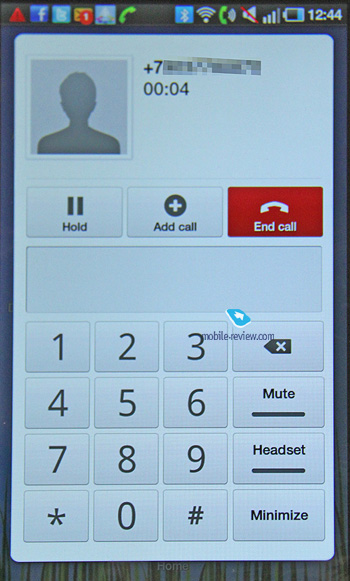
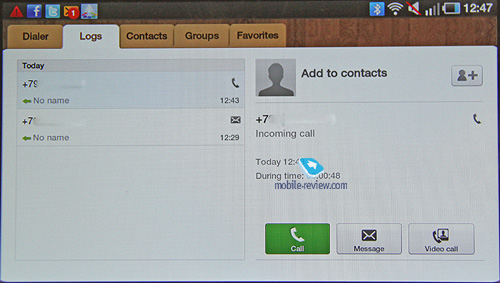
The phone mode has two applications – Phone (dialer, contacts,
contacts groups and favorites) and Messages. In the Messages you have
the chat mode, which is a carbon copy of Apple products. It remains a
secret for me why do we have such a coincidence.

Applications are convenient and are similar to their counterparts in Galaxy S. There is nothing special here.
Android 2.2 in Samsung TAB
We are familiar with the interface from Samsung S. Similar changes
in the menu, status bar and home screen are available here. The shell
from Samsung is used with all its advantages and deficiencies. There is
no point in detailed descriptions. Samsung screen with Swype support is
used for the text input. It is convenient.



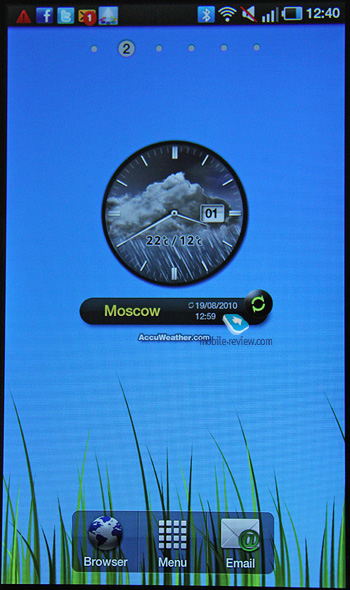
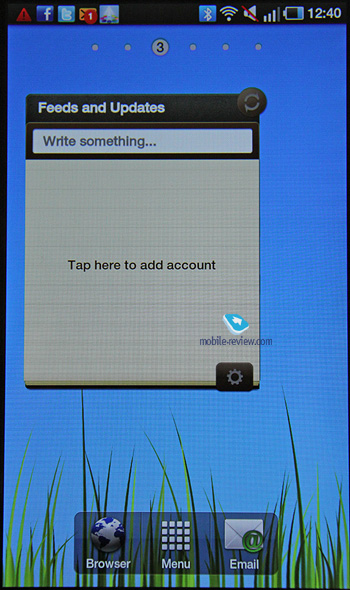
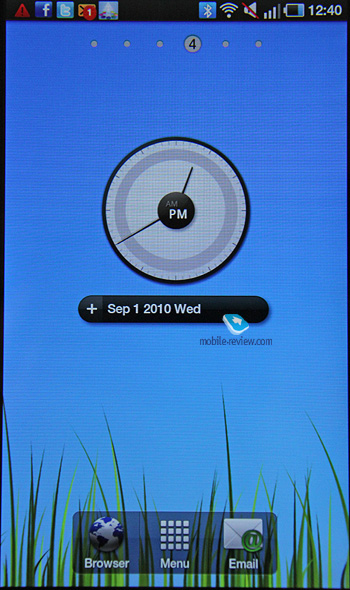
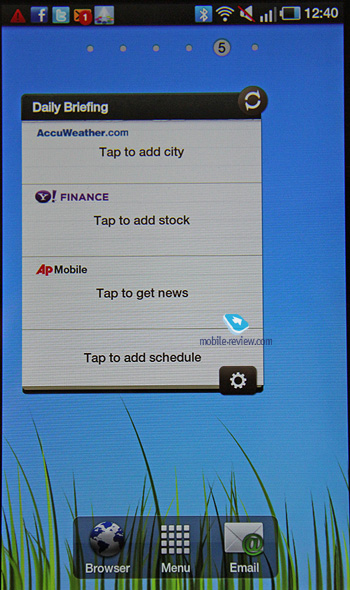
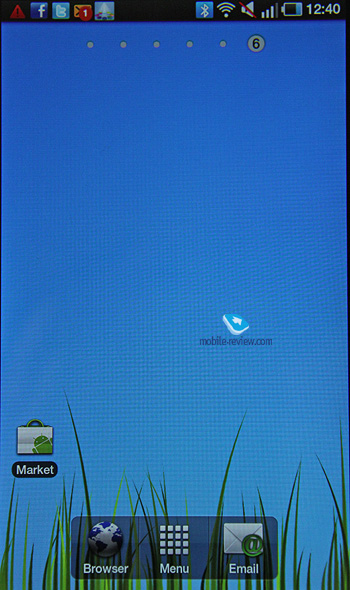
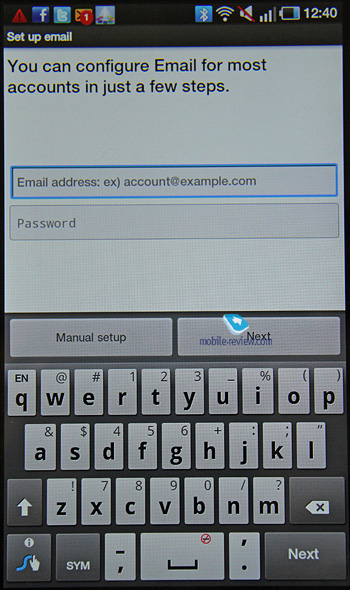








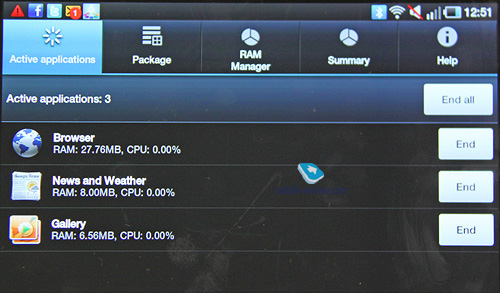
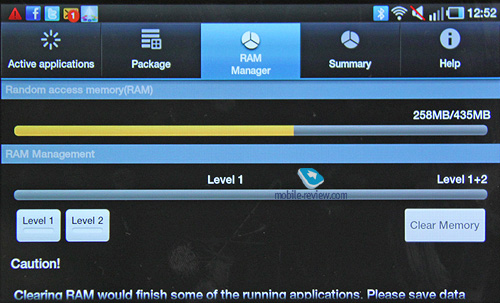
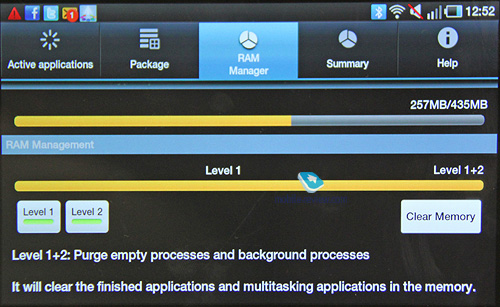
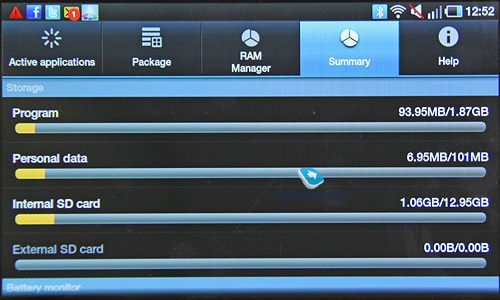
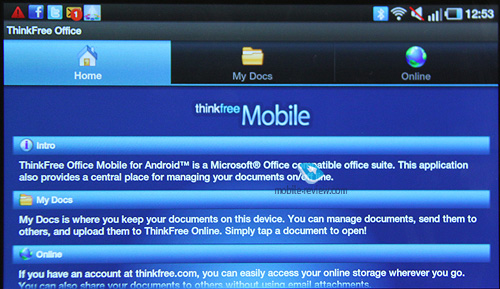
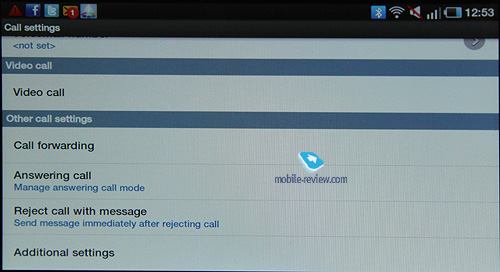
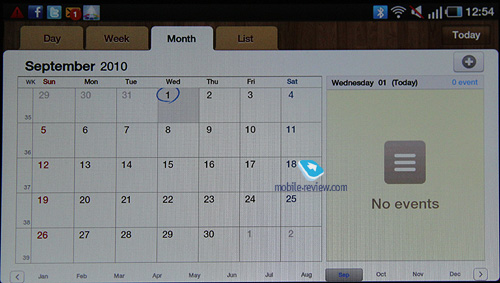
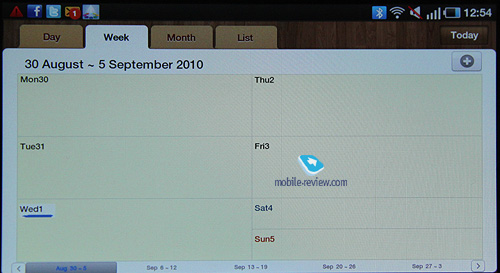
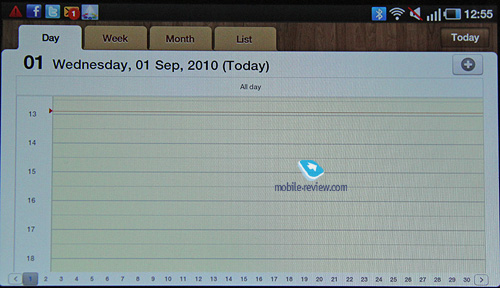
Adobe Flash 10.1. is supported out of the box.
Nevertheless, there is some difference from Galaxy S. In particular, we receive four Hubs. One of them is Social Hub dedicated to all social activities (various accounts, etc.). Similarly, we have Reader's Hub,
which gives access to several million books in 25 languages, 1600
newspapers in 42 languages and 3000 magazines in 20 languages. After the
device is launched we will give this feature a comprehensive test.
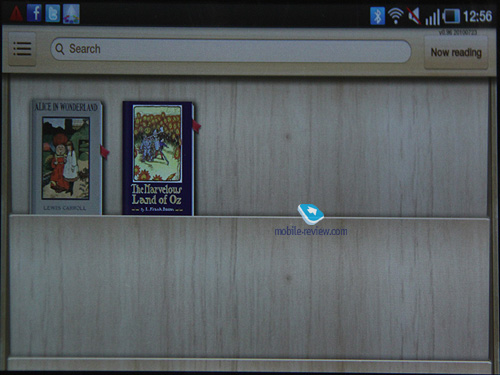
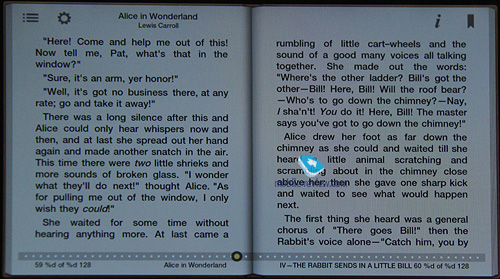
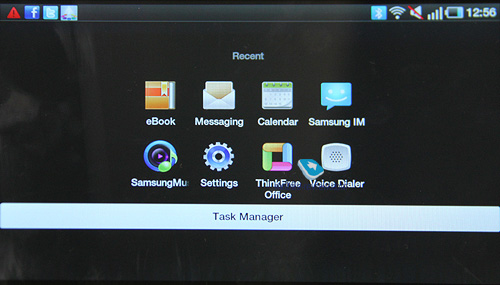
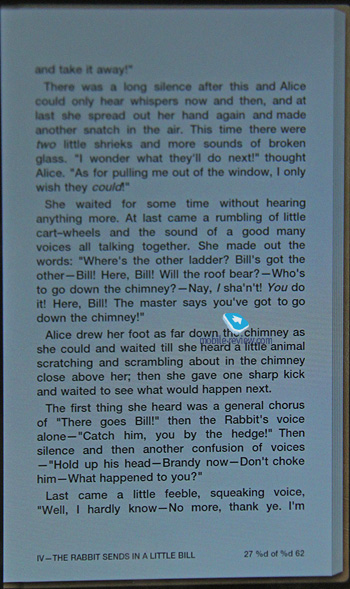
Music Hub is an application which not only brings
together all music files from the memory, but also shows the latest
charts, tips and is connected with Samsung music store. It is quite
helpful.
Media Hub enjoys the same features, but they work for movies. So far it works only in the USA, but other countries are also in line.
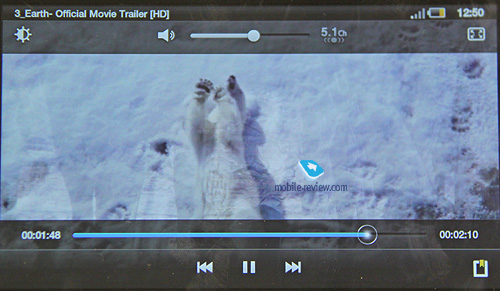


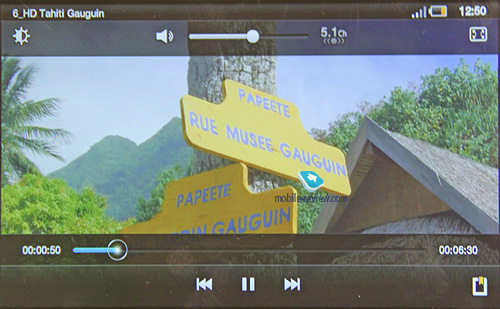
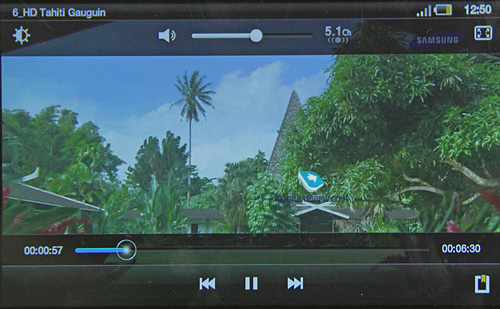
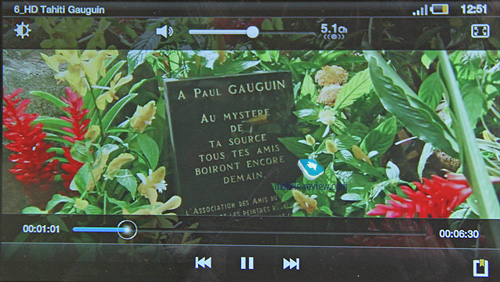
Impressions
Samsung tablet is released after Apple iPad and many will view it as
an attempt to compete with this reference device. There is no smoke
without fire, especially when you look at Messages app, charger and so
on. Minor details create an overall impression. Samsung TAB launch is
planned for mid October, but the most interesting issue is the price. It
will be definitely more expensive than Galaxy S, which translates into
€650-700 for a 16 GB version. It is possible that the price will be a
bit lower, but we should not expect dramatic changes. With such a price
in mind Samsung TAB loses out to all rival products on the market. Look
at iPad, which costs less in its cheapest version (no video calls or 3G,
but bigger screen, metal in the body, protective glass for screen and
the power of Apple brand). Various 7″ Android products cost €300 and
more, which is two times less. Samsung tablet has technical advantages
(camera, processor, memory, additional memory and 3G HSUPA), but who
will think about it in shops? I think Samsung TAB will easily acquire
the reputation of a very expensive model. It is likely to sell well in
the segment of Android fans and rich consumers looking for a tablet. We
should not expect high mass demand similar to Samsung Galaxy S. First
Samsung tablet is not iconic, but merely one of many. It is not the
first on the market and lacks the charisma of Apple iPad. High price
makes it less competitive outright. The first step was not completely
successful.
Material from mobile-review.com
| 
